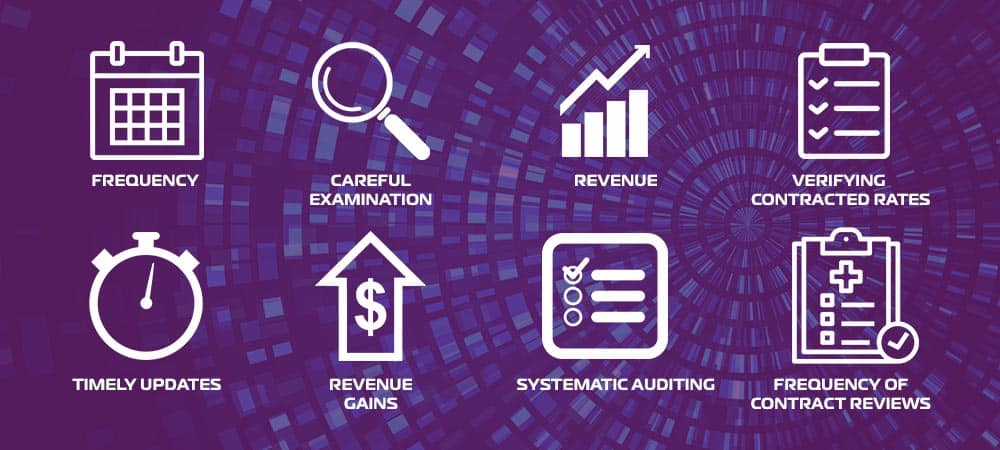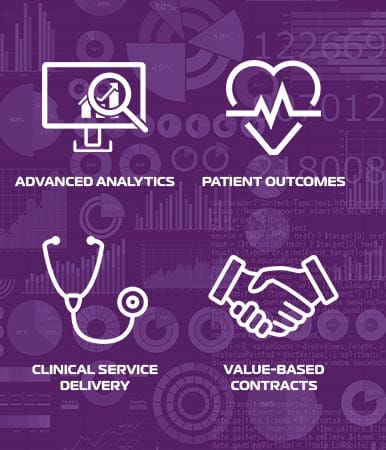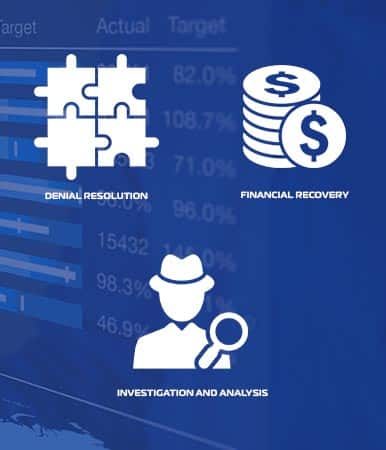Ever found yourself reviewing payer contracts and doubting whether your practice is capturing every dollar?
Managing the financial health of a healthcare practice is no small feat, especially when faced with suboptimal payer contracts and undetected underpayments. However, with vigilant management, these issues are preventable.
For instance, improperly verified rates result in inaccurate provider compensation and unrealized revenue recovery opportunities. Regular verification of allowable amounts against fee schedules – quarterly for Medicare and monthly for commercial payers – is crucial for ensuring timely and accurate payments as per contract terms.
Another prevalent issue is underpayments arising from discrepancies between published drug prices and actual acquisition costs, coupled with delays in updating contract terms in claims processing systems.
This article delves into effective strategies to maximize value from payer contracts, like identifying underpayments, utilizing data in negotiations, and leveraging analytics for revenue optimization. You’ll also see how Viewgol manages underpayments and performs reimbursement analysis.
Regular Payer Contract Reviews are Critical
 How often do you review your contracts?
How often do you review your contracts?
Regular payer contract reviews are essential to maintain the financial health of healthcare practices. Viewgol advises verifying contracted rates against your fee schedule at least quarterly for Medicare and monthly for commercial payers. This practice is crucial to identify discrepancies early and address them before appeal deadlines pass, ensuring that payments reflect the most current terms.
Additionally, revenue losses often occur due to the lack of timely updates in practice management (PM) systems after negotiating new contract terms, resulting in claims being processed against outdated rates, leading to underpayments. Carve-out services and routine downcoding of complex services also often go unnoticed, further negatively impacting revenue.
Regular auditing is key to identifying and rectifying these issues before they significantly impact the bottom line.
Actionable Best Practices for Contract & Payment Verification
Effective verification of reimbursement rates against contracted allowances is crucial and, when done consistently, yields significant benefits. Viewgol recommends these streamlined practices to ensure accurate payment verification:

Maintain up-to-date fee schedules in your PM or EHR systems. Regular updates reflect the most current contract terms.

Conduct frequent comparisons of actual reimbursements against the rate benchmarks defined in payer contracts. Set a consistent schedule for these reports tailored to your organization’s needs and the mix of payers you deal with.

Utilize powerful analytics software like Viewgol Analytics to simplify auditing high-volume contracts and programmatically identify discrepancies.

Assign dedicated personnel to thoroughly review variances, escalate significant issues for internal discussion, and fix where necessary.

Keep a detailed record of all reimbursement deviations. This data is vital to the appeals process and provides a strong foundation for future contract negotiations.
Payment Audits Uncover Hidden Revenue
Thorough auditing of payments and claim compensation levels is essential to avoid revenue loss. Every audit can reveal hidden stories in your practice’s financial performance, like unraveling a mystery. This includes checking actual payments against expected contractual rates. Underpayments often occur due to subtle issues, such as:

Outdated fee schedule mappings do not reflect new contract rates.

Intermittent errors in PM systems cause incorrect rate mappings.

Configuration errors lead to discrepancies in carve-out service reimbursements.

Systematic downcoding of complex services.

Changes in coverage resulting from evolving pharmaceutical policies and new therapies.
Viewgol utilizes advanced analytics to detect these underpayments systematically. It flags indicators like consistently low reimbursements for specific CPT codes compared to peers or declining collections from a payer despite stable clinical operations. Healthcare leaders can use a range of custom visualizations to analyze and address these issues.
Are you fully utilizing such technology to safeguard your revenue?
Negotiate Favorable Payer Terms by Leveraging Contract Analytics
Using advanced analytics to understand past performance equips organizations with solid, evidence-based leverage for negotiating value-based contracts. These analytics enable improvements in several key areas:

Achieving graduated reimbursement rate increases that align with service cost growth.

Reducing administrative burdens caused by inefficient information requests from insurers or unclear denials.

Speeding up claims approvals and payment settlements, considering the productivity constraints of clinical staff.

Decreasing the costs associated with managing third-party payer functions, such as the need for additional full-time staff.
Additionally, establishing historical performance benchmarks offers a quantifiable basis for targeting high ROI terms. This approach uncovers trends in:

Collection rate fluctuations by payer, often from contract adjustments.

Variations in denial volumes across different reasons and payers.

Patterns of reimbursement variability by CPT and HCPCS codes compared to specialty peers.

Average duration of payment collection from specific payers, as measured by A/R days.
Contract negotiations can then move from emotionally charged, subjective discussions to calm, objective, and evidence-based dialogues. This shift aims to build long-term, mutually beneficial relationships.
Successfully Navigate the Inevitable Shift Toward Value-Based Reimbursement

These data-driven insights are vital for healthcare organizations transitioning to value-based, at-risk service contracts—a critical shift in today’s rapidly evolving healthcare environment. Viewgol helps decipher the complex relationship between care quality, patient experience, and provider compensation, essential elements in a system increasingly focused on value and outcomes.
Real World Examples: Duplicate Provider Records and Drug Underpayments
During client engagements, Viewgol often discovers puzzling underpayments that persist for months, with no clear explanation from payers. These scenarios typically involve statements showing lower-than-expected reimbursement levels while denial and appeal volumes remain normal.
Underpayment in High-Cost Drug Claims
In one notable case, a leading Retina organization encountered significant underpayments in their drug claims. A specific claim expected to generate around $1400 in revenue resulted in only an $85 payment. These discrepancies were found in claims already closed, indicating they were not monitored for accuracy.
The challenge in this case was that the practice’s existing processes hadn’t fully captured certain nuances in reimbursement rates and methodologies. As a result, some claims were closed in the accounting software at random rates that Medicare applied, making it difficult for A/R teams to recognize and rectify these underpayments.
Viewgol’s Payer Science team thoroughly audited the closed claims and found a pattern of underpayments. They uncovered the root of the problem was, partially, the practice’s lack of accurate information on the correct rates established by payers for specific drug treatments. Without precise data, the practice accepted whatever payments were posted without question across various claims, resulting in the closure of these claims without proper reimbursement.
The Payer Science team was instrumental in identifying claims not readily apparent in the A/R data. Their precise and well-substantiated appeals played a crucial role in the recovery process.
The collaboration with Viewgol led to a significant recovery for the Retina practice, with more than $130,000 in Medicare underpayments reclaimed for two recently launched drugs, with an appeal success rate of 88%. Beyond the immediate revenue recovery, the process also enhanced the practice’s approach to managing and monitoring reimbursements, ensuring more accurate billing processes for future claims.
Tackling Complex Denials and Out-of-Network Processing Errors
In another scenario, a large ASC practice encountered a perplexing situation with multiple claims denials, causing significant patient dissatisfaction since 2021. Claims that should have been processed and covered were incorrectly applied toward patient responsibility. The issue had been an ongoing challenge for the practice’s contracting team, who had been in a back-and-forth with their payer counterparts. The payer team found no problems on their end and thus repeatedly advised the practice’s side to resubmit their claims.

Once Viewgol discovered the dual PINs, we then collaborated with the practice’s RCM team to correct the payer system error, ensuring that claims were processed using the correct, in-network PIN.
As a result of Viewgol’s efforts, the ASC practice saw a resolution of the denial issue, leading to the correct processing of claims and the recovery of more than $350,000 in allowable, addressing around 90% of the affected claims. This intervention corrected the immediate financial discrepancies and prevented future occurrences of similar issues, stabilizing the practice’s revenue stream and restoring trust in its billing processes.
Viewgol Brings Unique Analytics Capabilities to Optimize Contract Performance
Like a powerful lens bringing every minute detail into sharp focus, Viewgol’s analytics capabilities offer in-depth insights into your payer contracts and revenue integrity. Powerful software provides a range of functions for healthcare organizations, including:
Rapid comparison of actual reimbursement rates against the negotiated contract rates.

In-depth analysis of denial and appeal trends with interactive dashboards displaying reasons, physician, location, and date ranges.

Automated detection of unusual patterns that might indicate high-risk payment issues needing further investigation.

Detailed coverage for authorization denials and appeal volumes by CPT codes, individual providers, and linked payers.
The functions above represent a small sample of Viewgol’s extensive analytical application portfolio.
Could it transform how you oversee your contracts and reimbursements?
Viewgol Analytics equips finance leaders, billing managers, and practice administrators with unprecedented, detailed oversight of contracts, claims, and reimbursement performance-critical aspects of maintaining organizational stability.
Unearthing all that data isn’t enough.
Viewgol Engage combines rich data insights with robust business intelligence and specialized RCM teams to transform this data into strategic actions tailored to your unique practice needs.
From identifying underpayments to refining payer contract terms, Viewgol Engage equips you to make informed, impactful decisions that drive operational excellence.
Final Thoughts
Despite diligent efforts, there may still be opportunities for revenue enhancement within your current payer contracts.
To achieve stability, healthcare organizations must optimize payer contracts, scrutinize ambiguous payments, and collaborate with partners adept at navigating complex systems. Regular payer contract reviews and audits, supported by the right technology, are critical to systematically maximizing revenue and preventing financial losses.
Healthcare practice leaders should prioritize regular claim reviews, thorough audits of unclear payments, and the use of advanced analytics tools to identify and rectify revenue leaks. This level of systematic oversight is crucial to maintaining financial health in the face of healthcare industry volatility.
Ready to take the necessary proactive steps toward operational excellence?
Contact Viewgol today to schedule your free initial consultation.
RCM experts will provide a tailored solution plan to address your unique challenges and goals.



